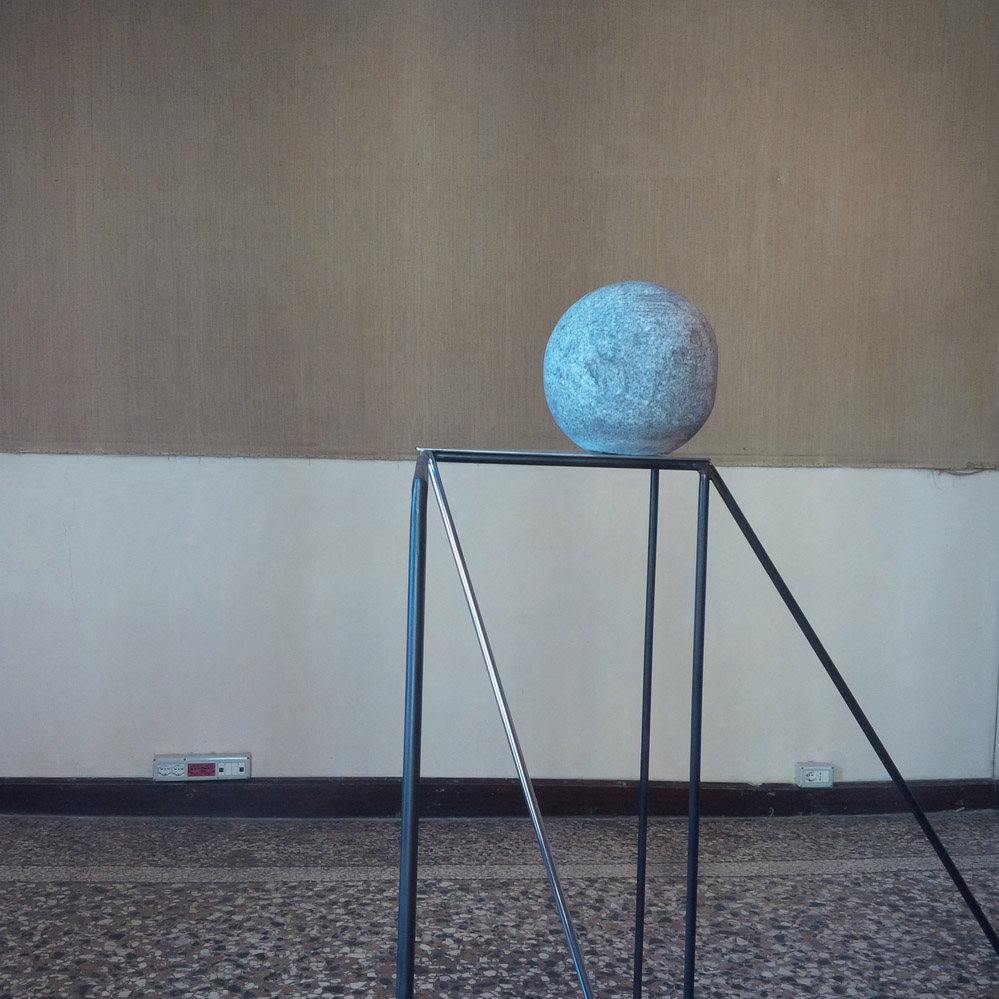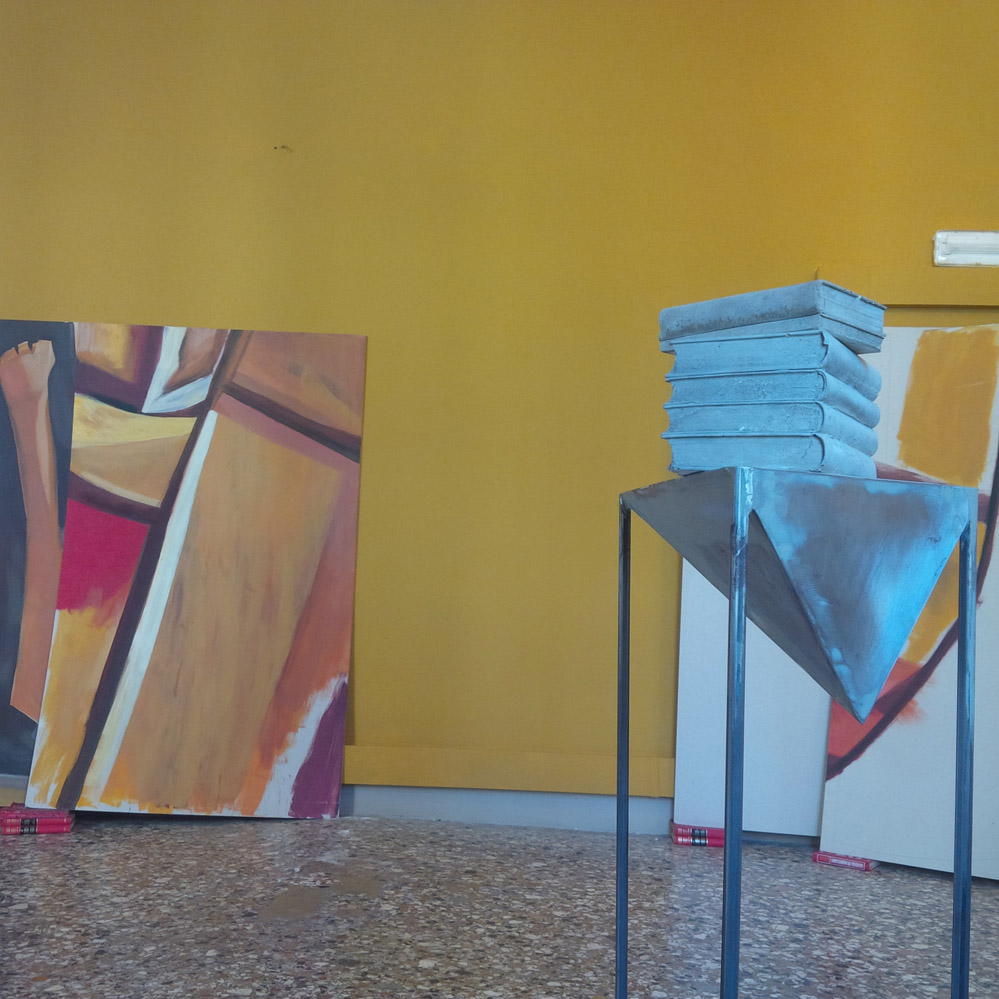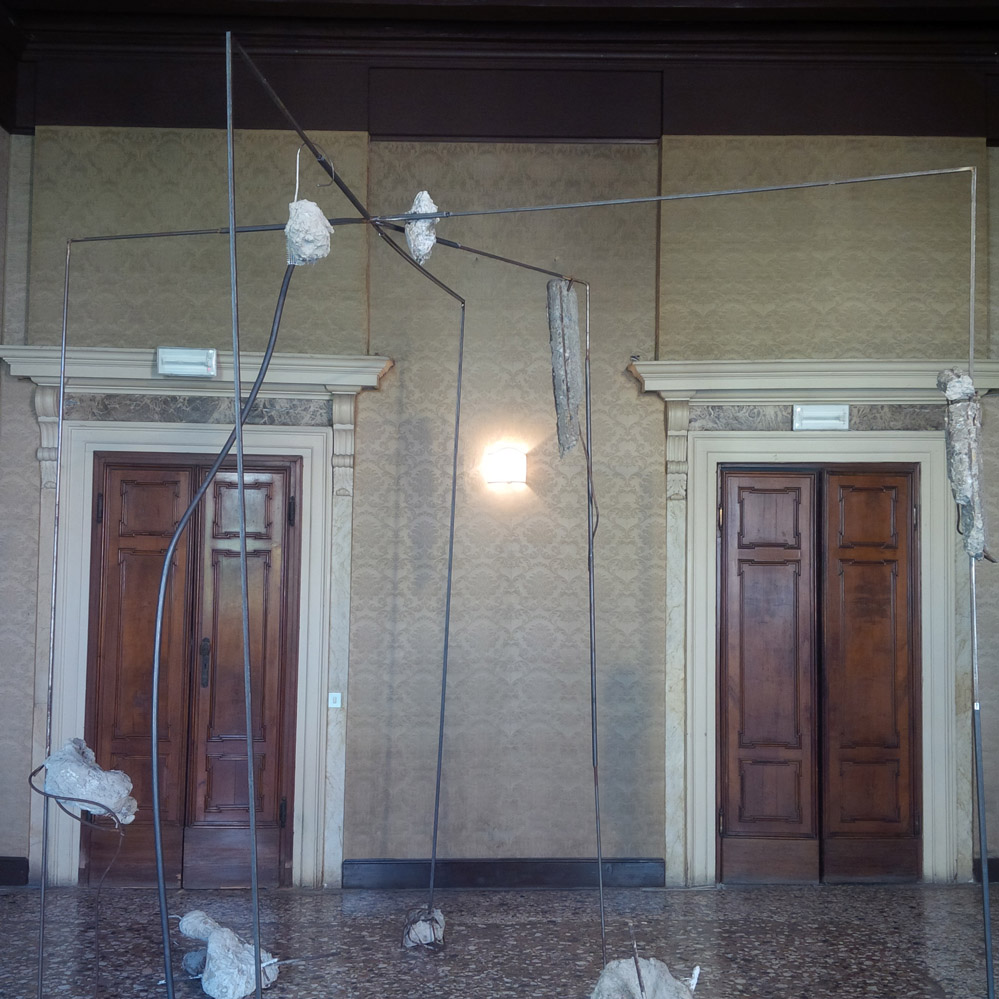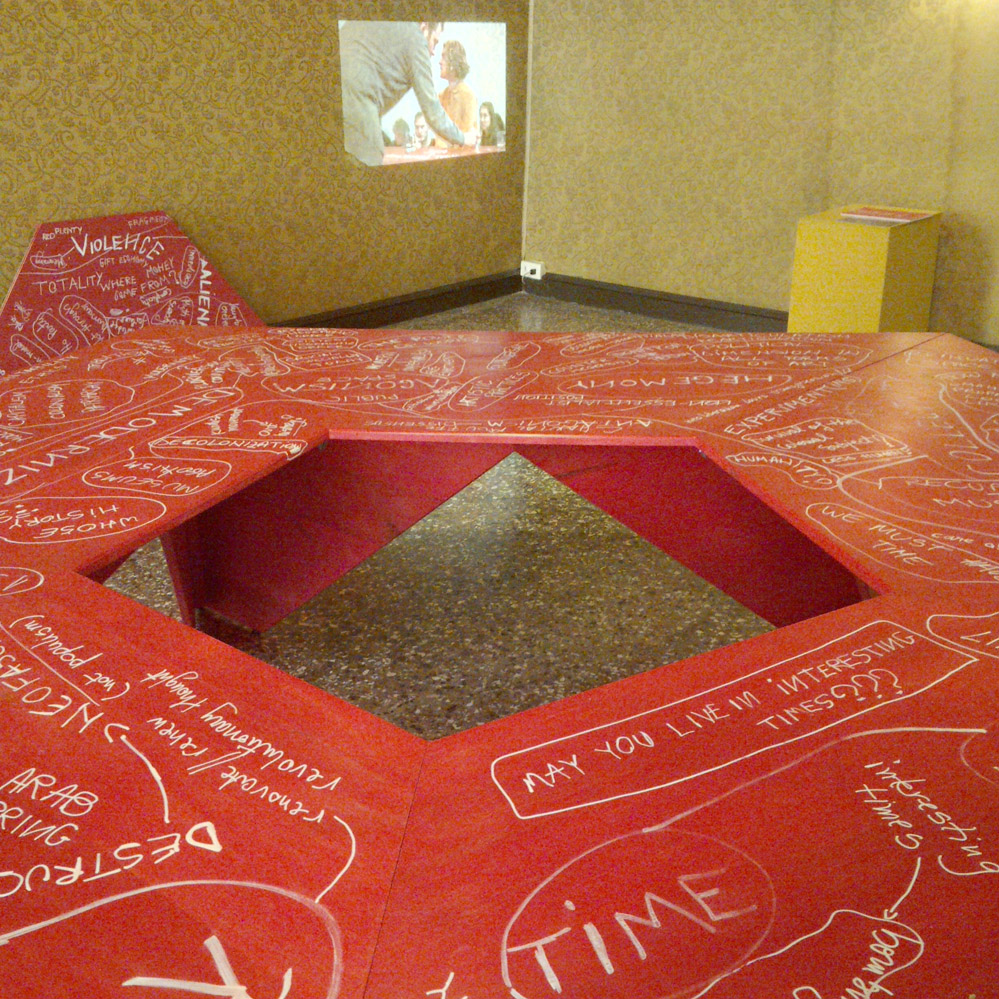Venice, Palazzo Rota Ivancich, May 11 – November 24, 2019, www.2019northmacedonia-labiennale.art

I enjoyed “Subversion to Red” a lot. Probably a part of my positive feelings was caused by arriving at the cool palace after wandering through the Venice summer heat. Probably a part of my positive feelings was caused by the off-location in a crumbling but still splendid palace. But, most probably, it was Nada Prjla’s youthful energy, positive approach, and ability to unite a number of disparate elements into one whole that was engaging to look at and explore.
The leftist/communist theme that Prjla works with fitted both into the western art/activism discourse, also to the “East European” post-communist stereotype. But I felt there was more than that. For example, compared to the pavilions of Croatia and Bosna and Herzegovina: Also they presented projects referring to the communist past, but they were much more of a documentary kind. Here, Prjla grounded her project in the past, but the playfully appropriated the ideas and symbols, while at the same time keeping a balance in treating them respectfully (important in order to be selected as a national representative). And the managed to connect with the western “leftist” discourse.
For example, Prjla created sculptures that were “inspired”, or copied from a (not anymore existing, destroyed by an earthquake) social realist mural, as well as modern(ist) sculptures collected in the country’s national museum. This approach was, on one way a clever move to “represent” the country well. On the other hand, I appreciated the direct honesty of stating the way how this sculptures were made instead of packaging them in some more esoteric curatorial concept. In effect, the installation looked very contemporary. But the “roots” and the story behind made it stand apart from some look-alike sculptures by other artists.

The exhibition featured a truly wide range of media: Aforementioned sculptures and paintings, a video performance, a live discussion, photography, all documented in a nice artist’s book/catalogue. One could say it was eclectic, but somehow, Prjla managed to keep it all together, and, for me, it was probably also the variety that made it interesting to explore.

The live discussion (documented on video) was a counterpart to the sculpture/painting installation. Also here, Prjla did not bother to talk much in circles, but let everyone go directly to the point, in a short amount of time: How can we reinvent communism, take something positive out of the past and develop it further? The simplification of course meant that many statements remained formulaic and nothing “new under the sun” was stated. It was a rather “light” discussion. Nevertheless, it was an entry point, an encouragement to go and dig deeper. It was a bit naïve, but inclusive.

If it was a different context, I would probably wish for a more “deep” and concentrated approach, but for the biennale, Prjla did a very good job in letting the viewers peek inside of her brain from many different angles, engaging the visitors, and letting them take away some inspiring impressions.